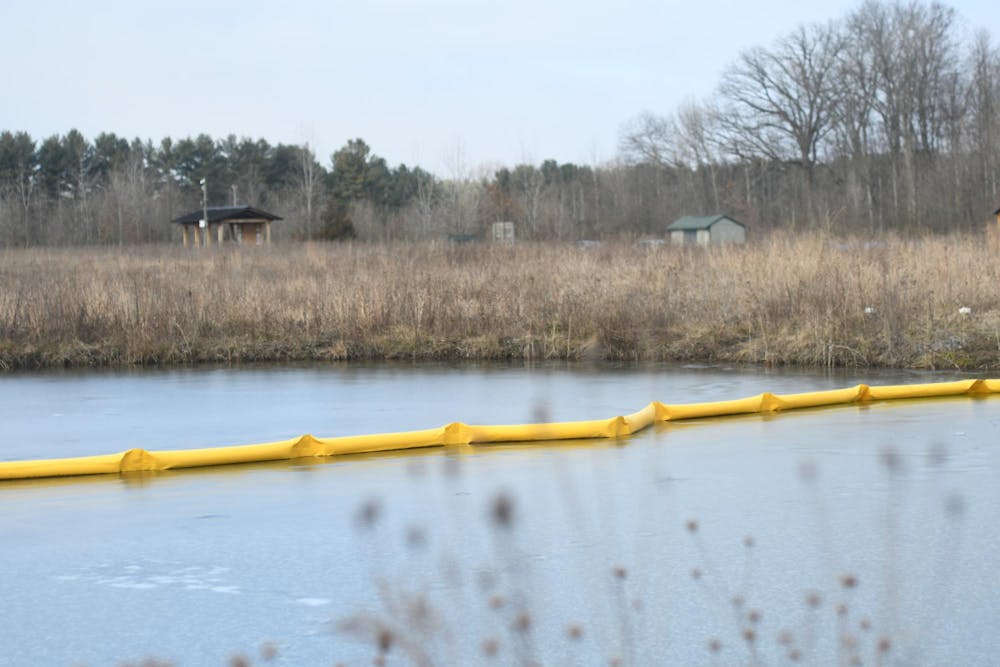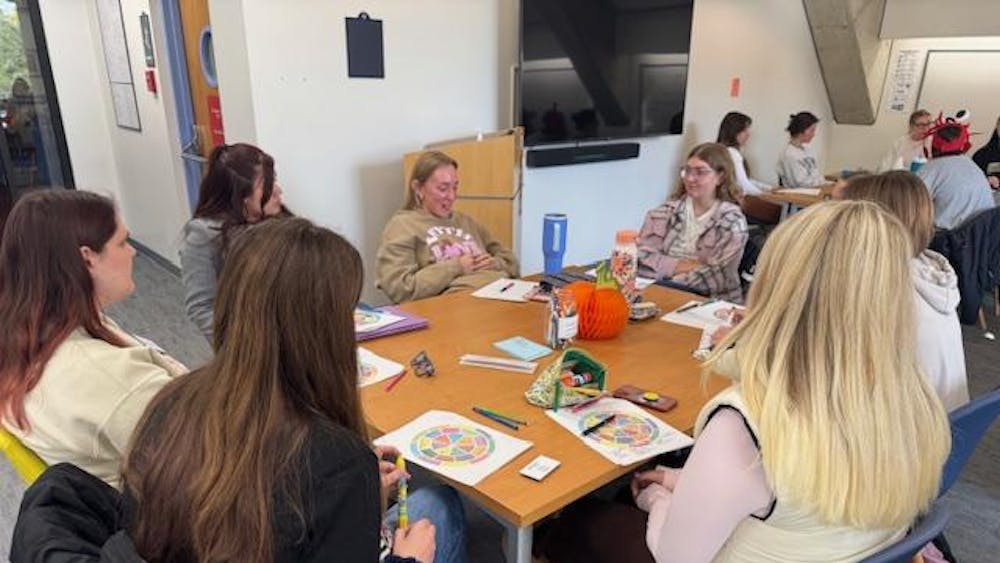A 10-minute drive from campus, the Notre Dame Linked Experimental Ecosystem Facility (ND-LEEF) is a researcher’s playground.
Considered “globally unique,” the facility consists of 32 acres containing a reservoir with four separate artificial watershed systems, flowing ground-pumped and aerated water from the facility’s reservoir into artificial stream, pond and wetland ecosystems.
“We always kind of say it’s bridging the gap between the lab and the field,” ND-LEEF assistant director Brett Peters said. “A lot of times lab experiments are a little too controlled; they don't offer the realism that we want in our experiments. And field experiments, you know, are at the whim of nature.”
Much of the research conducted at the facility tests how different substances move in water. A paper published in 2017 by a group of scientists features a set of experiments run at ND-LEEF which tracked the movement of environmental DNA (eDNA) from fish downstream in the facility’s ecosystems.
At ND-LEEF, Peters said, the study had the unique ability to control the experiment’s water supply, allowing it to more accurately track the flow of eDNA through its systems.
“With that kind of information managers in the real world can better understand what a positive or a negative result in the field means because they can have a better idea of how far that DNA could have come from and how long ago it was shed,” Peters said.

An unexpected arrival
The facility held its first research season in 2013, and just two years later the staff were surprised at the arrival of a pair of bald eagles, who kicked a red-tailed hawk out of its nest, located right next to the ponds on the facility’s west end.
“One of the goals at the onset of building this facility was to be as green as possible,” Peters said. “I think it speaks to that, because the eagles chose to come live there.”
The eagles showed up as Notre Dame was building the Morrison Family Education and Outreach Pavilion on the facility’s site, which was luckily just outside the 350-feet radius of the eagle’s nest recommended by the U.S. Fish and Wildlife Service to avoid disturbing the nest.
“It means that the pavilion that we built for education and outreach is the perfect place for people to come get a view of an eagle, so that’s really cool,” Peters said.
In 2018, the Notre Dame team embarked on a project to install a live-streaming camera above the eagle’s nest. They hired a local tree company with a tall “lift bucket” and a tree climber specialist who was able to set up the camera facing the nest with a cable running down the tree for internet connection.
Since starting the stream, the ND-LEEF nest has gained its own community of followers online. Followers have watched moments such as the parents fighting off a juvenile eagle, the nesting pair laying eggs and even the dramatic escape of a turtle.
The nest and its livestream has also offered ND-LEEF unique opportunities for its own research, Peters said. One undergraduate study, published in 2021 to a peer-reviewed journal used over 26,000 images from the ND-LEEF nest camera to find a detailed account of a healthy eagle’s diet.
“We found that 73% of the prey items that were brought in were fish, with 13 unique species that got brought in. And then there was also 13% of it was birds, 10% mammals and 4% reptiles,” Peters said.

The eagles nest at ND-LEEF stands high up in a tree directly adjacent to one of the facility's watershed systems.
Peters explained, however, that the eagle’s nest on the facility has caused the Notre Dame team some stress.
In 2020, an eaglet in the nest passed away. In 2021, the wired connection to the camera collapsed, not to be replaced in 2022, when in the summer perhaps the most dramatic event occurred: the nest collapsed.
With a little help from the Fish and Wildlife Service, who helped rescue the smallest of that year’s eaglets, which had been injured by the nest’s collapse, the nest collapse led to no damage for the eagles.
And by early 2023, the eagles had already rebuilt their nest in the same location. With the camera set up in that location, the Notre Dame team was grateful.
“Everyone was asking, ‘Are they going to build in the same spot?’ I was like, ‘Hopefully!’ You know, if there is a spot, it's going to be that spot, because they're creatures of habit,” Peters said. “They're going to naturally want to come back to the spot that's been successful.”
No eggs were laid in 2023 due to the disappearance of the nest’s female. However, a new one appeared later in the season and ND-LEEF is expecting the new nesting pair to lay eggs either in late February or early March.
“This is a new female, so we can’t really be sure what the schedule’s going to be this year, but we’re hopeful,” Peters said.

A story of success, but a sober reminder
Eagle populations have emerged triumphantly across the country following a long stint on the Endangered Species List.
According to the Indiana Department of Natural Resources, there were over 350 eagle nesting territories in 2020. The figure is a testament to the success of the state’s Bald Eagle Reintroduction Project, which had begun in 1985 after bald eagle populations in the state had been “extirpated” for over a century.
Despite these successes, however, the South Bend birdwatching community was soberly reminded just last week of the challenges that remain.
According to a Facebook post from the Indiana Humane Society Facebook page, a “sub-adult” bald eagle from Potato Creek State Park had been transferred to the organization’s facilities on Jan. 29 after it had been found in poor condition by a local birder.
After the Humane Society provided stabilizing care, the eagle passed away overnight from acute lead poisoning.
“A lead fragment the size of a grain of rice is lethal to a mature bald eagle, meaning that a standard 150 grain lead bullet can poison 10 eagles,” the Humane Society wrote in their post. “The deadly metal accumulates in an eagle’s system over the course of their lives, meaning that there is no safe amount of lead exposure. For this reason, lead is often called ‘the silent killer.’”
Acute lead poisoning is a result of lead ammunition and fishing tackle being left unintentionally by hunters and fishers in the field and in local waters. In their post, the Humane Society advocated for a transition to non-lead ammunition and tackle.
“Because these exposures are accidental, such as when a fish breaks the line or when a gut pile is left behind, the best way to decrease the risk of lead exposure is to transition to non-lead ammunition and tackle,” the society wrote. “Education around this issue is imperative not just for the health of bald eagles but also humans.”










